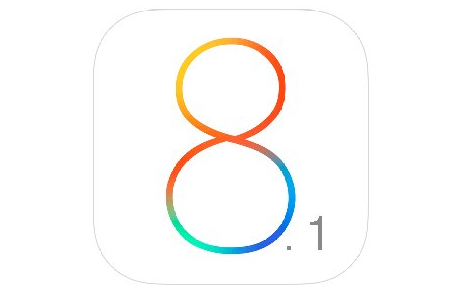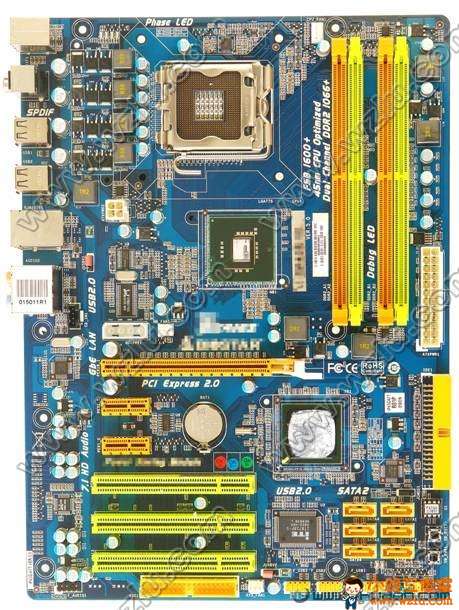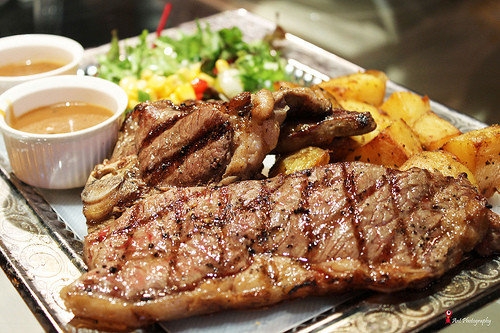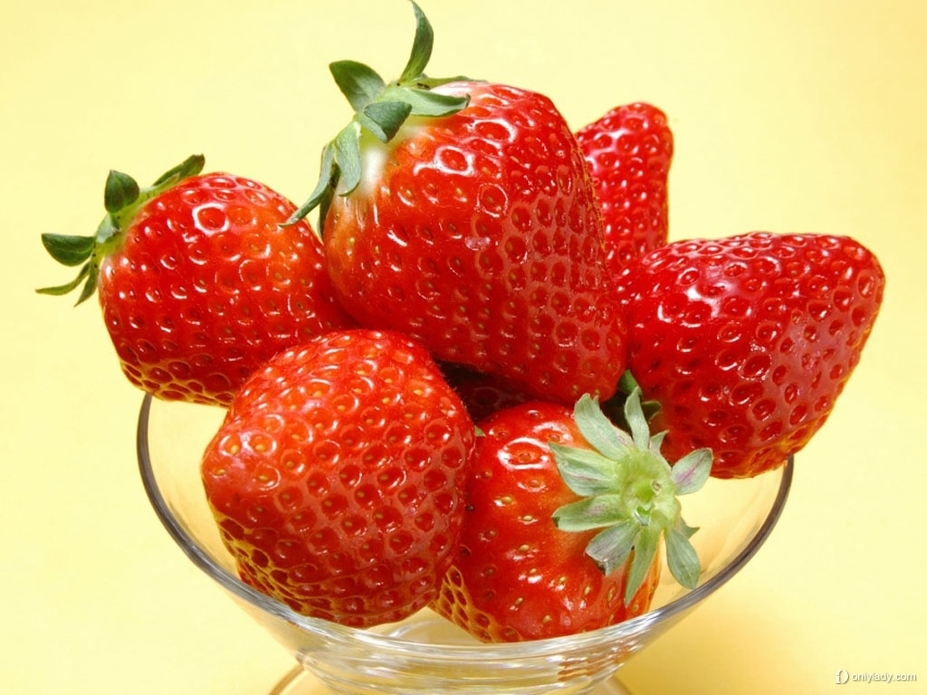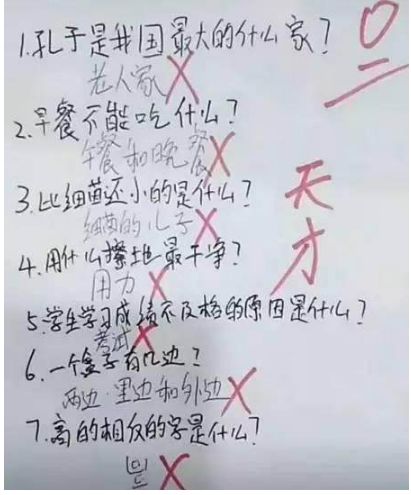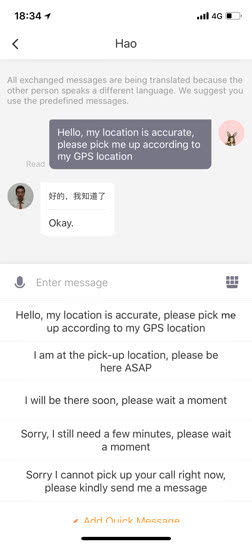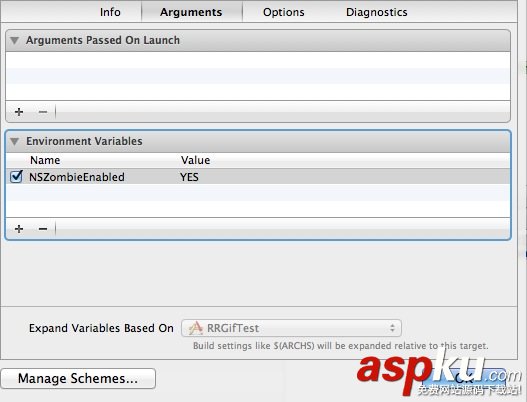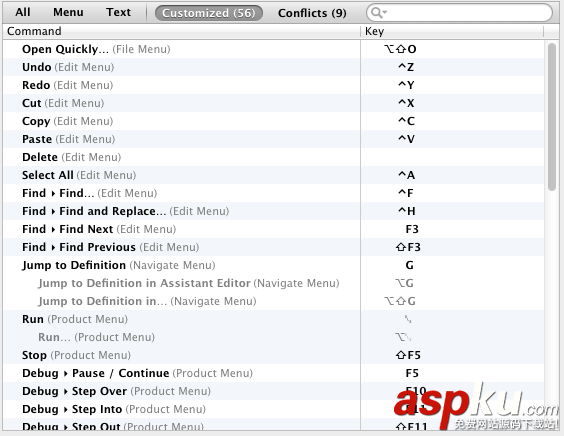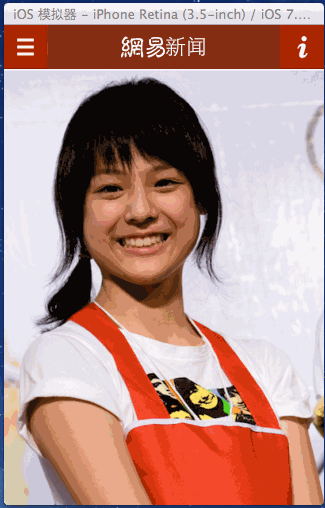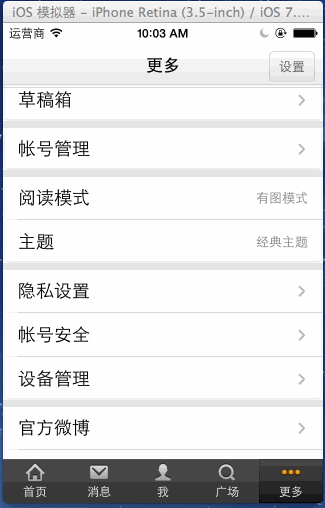有時(shí)候我們需要自己定義UITableViewCell的風(fēng)格,其實(shí)就是向行中添加子視圖。添加子視圖的方法主要有兩種:使用代碼以及從.xib文件加載。當(dāng)然后一種方法比較直觀。
一、基本用法
我們這次要自定義一個(gè)Cell,使得它像QQ好友列表的一行一樣:左邊是一張圖片,圖片的右邊是三行標(biāo)簽:
當(dāng)然,我們不會(huì)搞得這么復(fù)雜,只是有點(diǎn)意思就行。
1、運(yùn)行Xcode 4.2,新建一個(gè)Single View Application,名稱(chēng)為Custom Cell:
2、將圖片資源導(dǎo)入到工程。為此,我找了14張50×50的.png圖片,名稱(chēng)依次是1、2、……、14,放在一個(gè)名為Images的文件夾中。將此文件夾拖到工程中,在彈出的窗口中選中Copy items into…
添加完成后,工程目錄如下:
3、創(chuàng)建一個(gè)UITableViewCell的子類(lèi):選中Custom Cell目錄,依次選擇File — New — New File,在彈出的窗口,左邊選擇Cocoa Touch,右邊選擇Objective-C class:
單擊Next,輸入類(lèi)名CustomCell,Subclass of選擇UITableViewCell:
之后選擇Next和Create,就建立了兩個(gè)文件:CustomCell.h和CustomCell.m。
4、創(chuàng)建CustomCell.xib:依次選擇File — New — New File,在彈出的窗口,左邊選擇User Interface,右邊選擇Empty:
單擊Next,選擇iPhone,再單擊Next,輸入名稱(chēng)為CustomCell,選擇好位置:
單擊Create,這樣就創(chuàng)建了CustomCell.xib。
5、打開(kāi)CustomCell.xib,拖一個(gè)Table View Cell控件到面板上:
選中新加的控件,打開(kāi)Identity Inspector,選擇Class為CustomCell;然后打開(kāi)Size Inspector,調(diào)整高度為60。
6、向新加的Table View Cell添加控件:拖放一個(gè)ImageView控件到左邊,并設(shè)置大小為50×50。然后在ImageView右邊添加三個(gè)Label,設(shè)置標(biāo)簽字號(hào),最上邊的是14,其余兩個(gè)是12:
接下來(lái)向CustomCell.h添加Outlet映射,將ImageView與三個(gè)Label建立映射,名稱(chēng)分別為imageView、nameLabel、decLabel以及l(fā)ocLable,分別表示頭像、昵稱(chēng)、個(gè)性簽名,地點(diǎn)。
選中Table View Cell,打開(kāi)Attribute Inspector,將Identifier設(shè)置為CustomCellIdentifier:
為了充分使用這些標(biāo)簽,還要自己創(chuàng)建一些數(shù)據(jù),存在plist文件中,后邊會(huì)做。
7、打開(kāi)CustomCell.h,添加屬性:
@property (copy, nonatomic) UIImage *image;
@property (copy, nonatomic) NSString *name;
@property (copy, nonatomic) NSString *dec;
@property (copy, nonatomic) NSString *loc;
8、打開(kāi)CustomCell.m,向其中添加代碼:
8.1 在@implementation下面添加代碼:
@synthesize image;
@synthesize name;
@synthesize dec;
@synthesize loc;
8.2 在@end之前添加代碼:
- (void)setImage:(UIImage *)img {
if (![img isEqual:image]) {
image = [img copy];
self.imageView.image = image;
}
}
-(void)setName:(NSString *)n {
if (![n isEqualToString:name]) {
name = [n copy];
self.nameLabel.text = name;
}
}
-(void)setDec:(NSString *)d {
if (![d isEqualToString:dec]) {
dec = [d copy];
self.decLabel.text = dec;
}
}
-(void)setLoc:(NSString *)l {
if (![l isEqualToString:loc]) {
loc = [l copy];
self.locLabel.text = loc;
}
}
這相當(dāng)于重寫(xiě)了各個(gè)set函數(shù),從而當(dāng)執(zhí)行賦值操作時(shí),會(huì)執(zhí)行我們自己寫(xiě)的函數(shù)。
好了,現(xiàn)在自己定義的Cell已經(jīng)可以使用了。
不過(guò)在此之前,我們先新建一個(gè)plist,用于存儲(chǔ)想要顯示的數(shù)據(jù)。建立plist文件的方法前面的文章有提到。我們建好一個(gè)friendsInfo.plist,往其中添加數(shù)據(jù)如下:
注意每個(gè)節(jié)點(diǎn)類(lèi)型選擇。
9、打開(kāi)ViewController.xib,拖一個(gè)Table View到視圖上,并將Delegate和DataSource都指向File' Owner,就像上一篇文章介紹的一樣。
10、打開(kāi)ViewController.h,向其中添加代碼:
#import <UIKit/UIKit.h>
@interface ViewController : UIViewController<UITableViewDelegate, UITableViewDataSource>
@property (strong, nonatomic) NSArray *dataList;
@property (strong, nonatomic) NSArray *imageList;
@end
11、打開(kāi)ViewController.m,添加代碼:
11.1 在首部添加:
#import "CustomCell.h"
11.2 在@implementation后面添加代碼:
@synthesize dataList;
@synthesize imageList;
11.3 在viewDidLoad方法中添加代碼:
- (void)viewDidLoad
{
[super viewDidLoad];
// Do any additional setup after loading the view, typically from a nib.
//加載plist文件的數(shù)據(jù)和圖片
NSBundle *bundle = [NSBundle mainBundle];
NSURL *plistURL = [bundle URLForResource:@"friendsInfo" withExtension:@"plist"];
NSDictionary *dictionary = [NSDictionary dictionaryWithContentsOfURL:plistURL];
NSMutableArray *tmpDataArray = [[NSMutableArray alloc] init];
NSMutableArray *tmpImageArray = [[NSMutableArray alloc] init];
for (int i=0; i<[dictionary count]; i++) {
NSString *key = [[NSString alloc] initWithFormat:@"%i", i+1];
NSDictionary *tmpDic = [dictionary objectForKey:key];
[tmpDataArray addObject:tmpDic];
NSString *imageUrl = [[NSString alloc] initWithFormat:@"%i.png", i+1];
UIImage *image = [UIImage imageNamed:imageUrl];
[tmpImageArray addObject:image];
}
self.dataList = [tmpDataArray copy];
self.imageList = [tmpImageArray copy];
}
11.4 在ViewDidUnload方法中添加代碼:
self.dataList = nil;
self.imageList = nil;
11.5 在@end之前添加代碼:
#pragma mark -
#pragma mark Table Data Source Methods
- (NSInteger)tableView:(UITableView *)tableView numberOfRowsInSection:(NSInteger)section {
return [self.dataList count];
}
- (UITableViewCell *)tableView:(UITableView *)tableView cellForRowAtIndexPath:(NSIndexPath *)indexPath {
static NSString *CustomCellIdentifier = @"CustomCellIdentifier";
static BOOL nibsRegistered = NO;
if (!nibsRegistered) {
UINib *nib = [UINib nibWithNibName:@"CustomCell" bundle:nil];
[tableView registerNib:nib forCellReuseIdentifier:CustomCellIdentifier];
nibsRegistered = YES;
}
CustomCell *cell = [tableView dequeueReusableCellWithIdentifier:CustomCellIdentifier];
NSUInteger row = [indexPath row];
NSDictionary *rowData = [self.dataList objectAtIndex:row];
cell.name = [rowData objectForKey:@"name"];
cell.dec = [rowData objectForKey:@"dec"];
cell.loc = [rowData objectForKey:@"loc"];
cell.image = [imageList objectAtIndex:row];
return cell;
}
#pragma mark Table Delegate Methods
- (CGFloat)tableView:(UITableView *)tableView heightForRowAtIndexPath:(NSIndexPath *)indexPath {
return 60.0;
}
- (NSIndexPath *)tableView:(UITableView *)tableView
willSelectRowAtIndexPath:(NSIndexPath *)indexPath {
return nil;
}
12、運(yùn)行:
二、如何重用UITableviewCell
重用的目的是為了減少內(nèi)存消耗,假如有1千個(gè)cell,如果不重用,那么每一次滑動(dòng)都得重新
alloc 很多很多的cell,耗費(fèi)內(nèi)存,同時(shí)屏幕會(huì)出現(xiàn)不連續(xù)的現(xiàn)象,晃眼睛。
重用cell很簡(jiǎn)單,在創(chuàng)建cell的時(shí)候,使用
alloc initwithtableviewCellStyle:reuseIdentifer這個(gè)接口創(chuàng)建cell實(shí)例,而非使用alloc initwithFrame
使用前者表示該cell可重用,identifer使用一個(gè)固定的NSString即可
代碼如下:
-(UITableViewCell*)tableView:(UITableView *)tableView cellForRowAtIndexPath:(NSIndexPath *)indexPath
{
static NSString *CellIdentifier = @"Cell";
UITableViewCell *cell = [tableView dequeueReusableCellWithIdentifier:CellIdentifier];//首先從可重用隊(duì)列里面彈出一個(gè)cell
if (cell == nil) {//說(shuō)明可重用隊(duì)列里面并cell,此時(shí)需要重新創(chuàng)建cell實(shí)例,采用下面方法
cell = [[UITableViewCell alloc] initWithStyle:UITableViewCellStyleDefault reuseIdentifier:CellIdentifier] ;
}else{//此時(shí)表示有可重用cell,直接返回即可
NSLog(@"cell 重用啦");
}
return cell;
}
三、如何如何動(dòng)態(tài)調(diào)整cell的高度?
這個(gè)問(wèn)題還是比較頭疼的,下面這個(gè)函數(shù)肯定要用到
-(CGFloat)tableView:(UITableView *)tableView heightForRowAtIndexPath:(NSIndexPath *)indexPath
經(jīng)過(guò)實(shí)踐之后發(fā)現(xiàn),可以在創(chuàng)建cell或者重用cell的時(shí)候,設(shè)置其frame
比如cell.frame=CGRectMake(0,0,320,450);
這個(gè)代碼會(huì)有效,同時(shí)在下面這個(gè)函數(shù)里面
使用:
-(CGFloat)tableView:(UITableView *)tableView heightForRowAtIndexPath:(NSIndexPath *)indexPath
{
NSLog(@"當(dāng)前是第%ld行",(long)indexPath.row);
UITableViewCell *myCell=[self tableView:tableView cellForRowAtIndexPath:indexPath];//獲取當(dāng)前indexPath中的cell實(shí)例
if( myCell == nil ){
return 0;
}else{
NSLog(@"%f",myCell.frame.size.height);
return myCell.frame.size.height;
}
return 0;
}
上面獲取當(dāng)前indexPath的cell實(shí)例會(huì)重新申請(qǐng)建立一個(gè)實(shí)例(意思是個(gè)cell實(shí)際要?jiǎng)?chuàng)建兩個(gè)實(shí)例)
這樣的目的是為了獲取cell的frame,如果不這樣做也可以在第一部分創(chuàng)建cell的時(shí)候,將cell的frame保存在一個(gè)私有
變量中,在heightForRowAtIndexPath中訪(fǎng)問(wèn)這個(gè)私有變量
通過(guò)上述方式可以動(dòng)態(tài)改變UITableViewCell的高度
四、對(duì)于一個(gè)UILabel,根據(jù)其內(nèi)容計(jì)算CGRect
首先要設(shè)置UILable的font,比如
tmLabel.font=[UIFont systemFontOfSize:14.0f];
然后使用boundingRectOfSize計(jì)算出該尺寸對(duì)應(yīng)的矩形大小,代碼如下:
NSDictionary *attrDic=@{NSFontAttributeName:[UIFont systemFontOfSize:12.0f]};
CGSize labelSize=[text boundingRectWithSize:CGSizeMake(320, 990)
options:NSStringDrawingUsesLineFragmentOrigin|NSStringDrawingUsesFontLeading
attributes:attrDic context:nil].size;
CGRect labelRect=CGRectMake(0, 0, labelSize.width, labelSize.height);
現(xiàn)在UILable的rect都可以被計(jì)算出來(lái)了,那么如果自定義一個(gè)UITableViewCell,并且其內(nèi)部的UILabel高度可變的話(huà)
也是可以實(shí)現(xiàn)的
五、內(nèi)部含有可變高度的UILabel的UITableViewCell
如果還有其他控件,比如UIButton等等,也是一樣的。
這些控件在實(shí)例化的時(shí)候,設(shè)置frame為CGRectZero, 然后分別計(jì)算各自的高度和尺寸
使用cell.contentview addSubview 的方式,將這些子空間添加到cell中。重新計(jì)算cell的frame時(shí)
也需要把這些控件的frame累加上。上代碼:
-(UITableViewCell*)tableView:(UITableView *)tableView cellForRowAtIndexPath:(NSIndexPath *)indexPath
{
static NSString *CellIdentifier = @"Cell";
UITableViewCell *cell = [tableView dequeueReusableCellWithIdentifier:CellIdentifier];
if (cell == nil) {
cell = [[UITableViewCell alloc] initWithStyle:UITableViewCellStyleDefault reuseIdentifier:CellIdentifier] ;
UILabel *label = [[UILabel alloc] initWithFrame:CGRectZero];
label.tag = 1;
label.lineBreakMode = NSLineBreakByCharWrapping;
label.highlightedTextColor = [UIColor whiteColor];
label.numberOfLines = 0;
label.opaque = NO; // 選中Opaque表示視圖后面的任何內(nèi)容都不應(yīng)該繪制
label.font=[UIFont systemFontOfSize:12.0f];
label.backgroundColor = [UIColor grayColor];
[cell.contentView addSubview:label];
UIButton *tmpButton=[[UIButton alloc]initWithFrame:CGRectZero];
tmpButton.tag=2;
tmpButton.backgroundColor=[UIColor cyanColor];
[cell.contentView addSubview:tmpButton];
tmpButton.opaque=NO;
[tmpButton setTitle:@"nihao" forState:UIControlStateNormal];
[tmpButton setTitleColor:[UIColor whiteColor ]forState:UIControlStateHighlighted];
[tmpButton addTarget:self action:@selector(tmpButtonHandler:) forControlEvents:UIControlEventTouchUpInside];
}else{
NSLog(@"cell 重用啦");
}
UILabel *tmpLabel=(UILabel *)[cell viewWithTag:1];
NSString *text=[tmpArray objectAtIndex:indexPath.row];
tmpLabel.text=text;
UIButton *tmpButton=(UIButton *)[cell viewWithTag:2];
NSDictionary *attrDic=@{NSFontAttributeName:[UIFont systemFontOfSize:12.0f]};
CGSize labelSize=[text boundingRectWithSize:CGSizeMake(320, 990)
options:NSStringDrawingUsesLineFragmentOrigin|NSStringDrawingUsesFontLeading
attributes:attrDic context:nil].size;
CGRect labelRect=CGRectMake(0, 0, labelSize.width, labelSize.height);//計(jì)算UILabel的rect
[tmpLabel setFrame:labelRect];
[tmpButton setFrame:CGRectMake(0, labelSize.height+1, 100, 50)];//計(jì)算UIButton 子控件的rect
[cell setFrame:CGRectMake(0, 0, labelSize.width, labelSize.height+50+1)];//cell的frame是以上兩個(gè)子控件之和
return cell;
}
為何不再創(chuàng)建時(shí)設(shè)置frame,而是在if和else邏輯后面?
重用cell的時(shí)候,從重用cell隊(duì)列里面取出的cell,其內(nèi)容(UILabel)是之前的cell內(nèi)容,需要重新填充UILabel并且重新計(jì)算
整個(gè)cell的frame并設(shè)置其frame。而創(chuàng)建cell的時(shí)候也需要設(shè)置frame,所以這兩個(gè)邏輯重復(fù),直接放在if else邏輯外面做。













